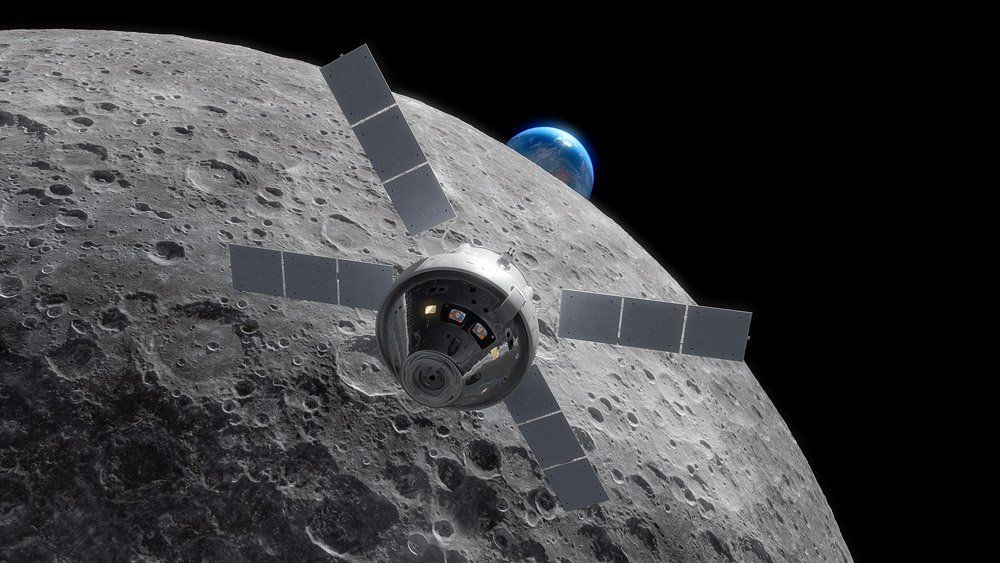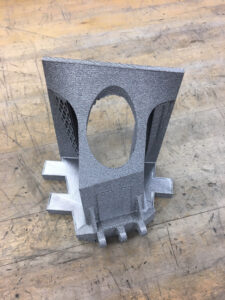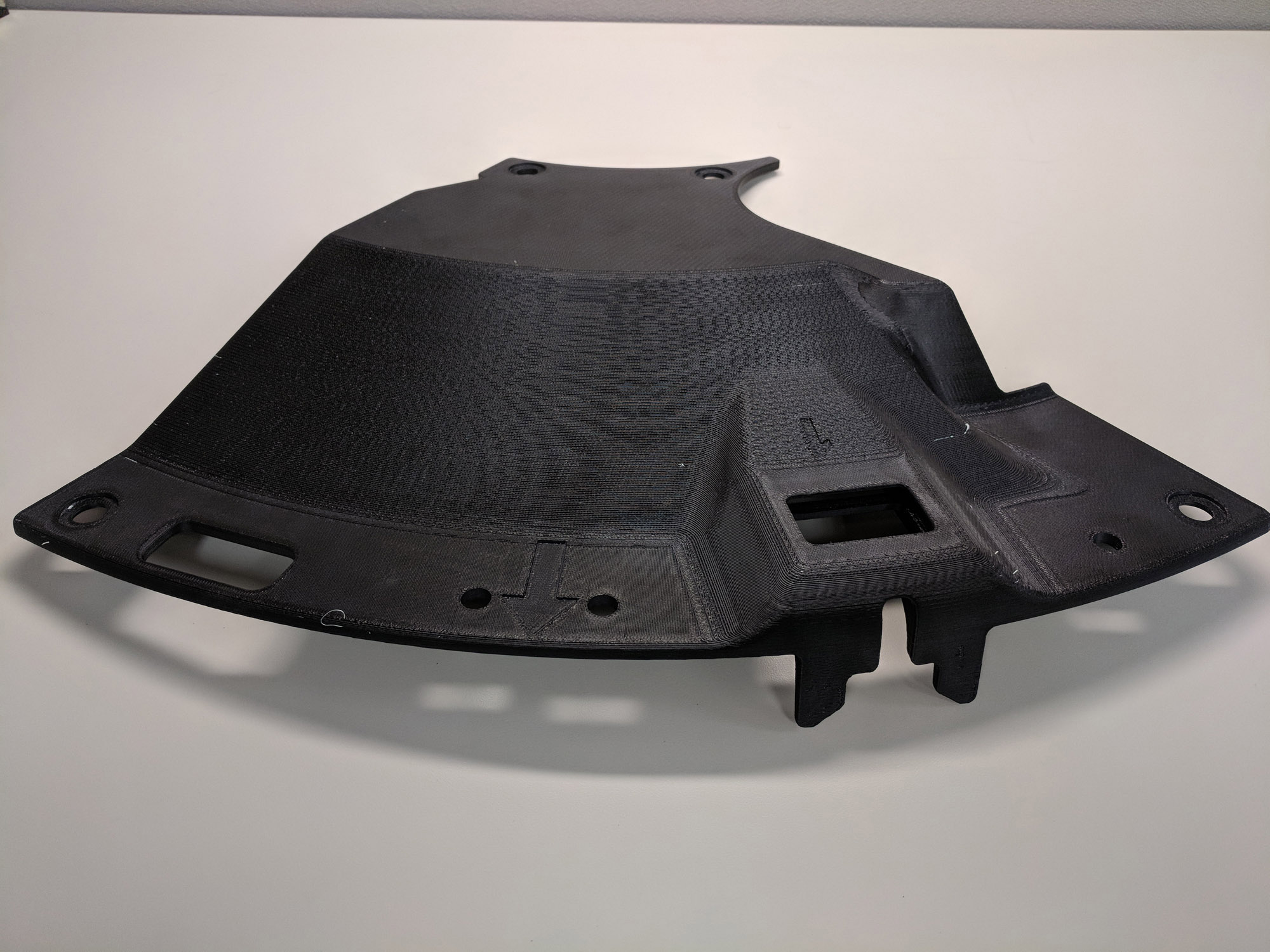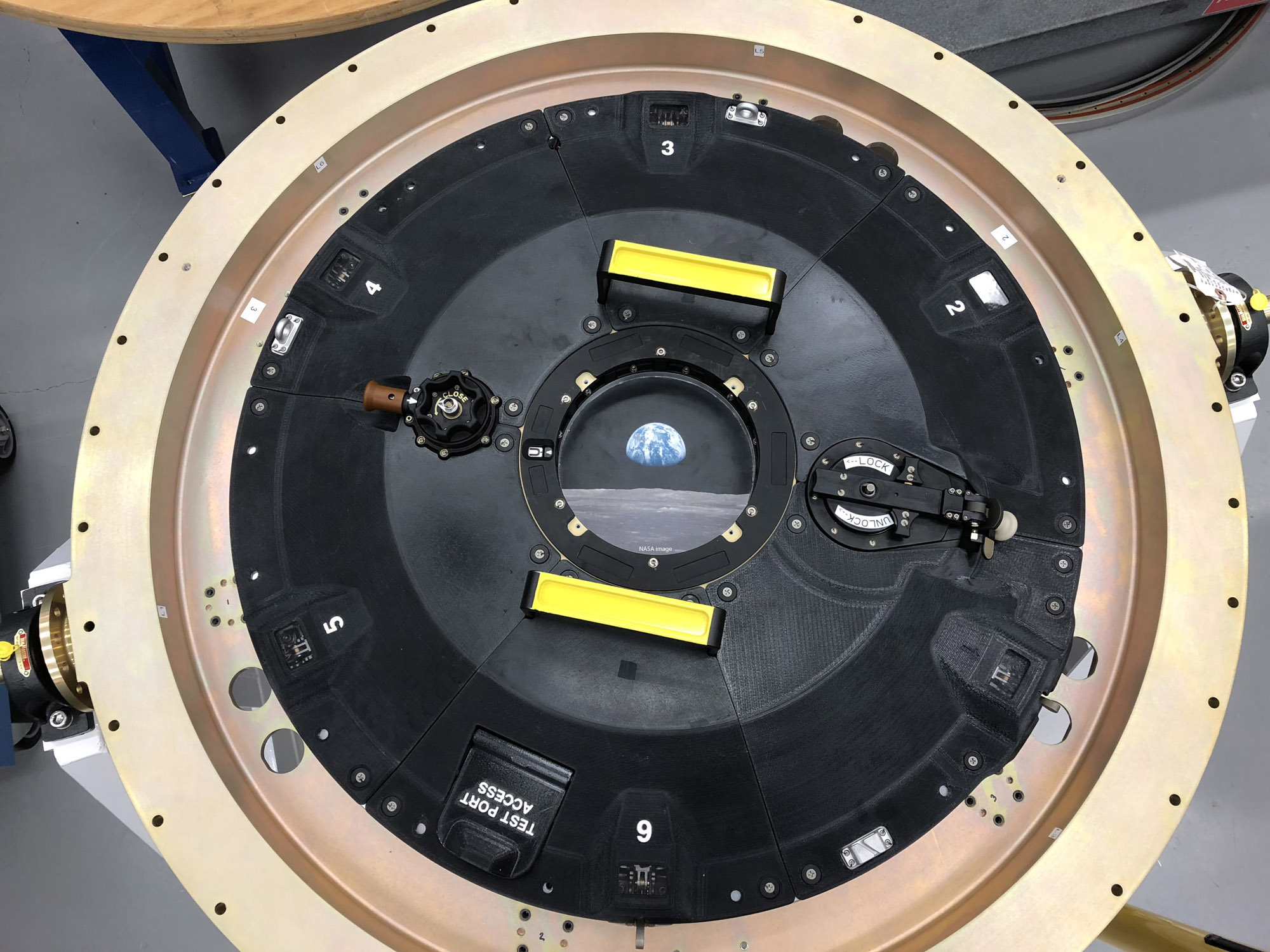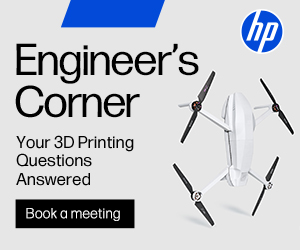Interview with Lockheed: “Orion Spacecraft Has 200 3D Printed Components”
 In 2006, NASA selected Lockheed Martin to design, develop, and build Orion, set to embark on both manned and unmanned missions, it is the agency’s newest deep space exploration spaceship that will eventually carry astronauts from the Earth to the Moon, and back. As part of a plan to extend a sustained human presence beyond low Earth orbit (LEO), advance commerce and science in space, the Artemis program is the next step in human space exploration and a part of NASA’s broader Moon to Mars approach.
In 2006, NASA selected Lockheed Martin to design, develop, and build Orion, set to embark on both manned and unmanned missions, it is the agency’s newest deep space exploration spaceship that will eventually carry astronauts from the Earth to the Moon, and back. As part of a plan to extend a sustained human presence beyond low Earth orbit (LEO), advance commerce and science in space, the Artemis program is the next step in human space exploration and a part of NASA’s broader Moon to Mars approach.
 In 2022, the Orion crew capsule is expected to take astronauts on a ride beyond LEO, to the Moon and back, and in five years it will transport the next people to a lunar orbital post.
In 2022, the Orion crew capsule is expected to take astronauts on a ride beyond LEO, to the Moon and back, and in five years it will transport the next people to a lunar orbital post.
NASA’s Orion spacecraft has been using additive manufacturing technologies exponentially. Lockheed Martin and NASA recently announced the completion of the Orion crew and service module being developed for the uncrewed Artemis I mission, which used 100 3D printed parts. While the spacecraft for the Artemis II mission has Lockheed developing close to 200 3D printed parts.
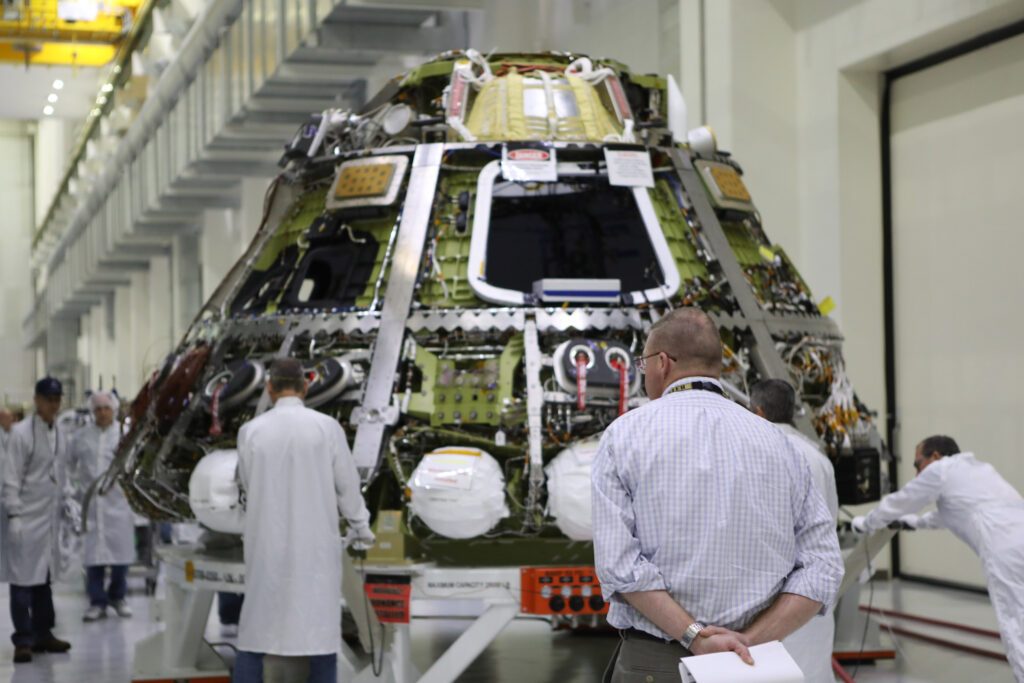
The Orion crew module for Exploration Mission 1 that will launch atop NASA’s Space Launch System rocket on its first uncrewed integrated flight (Image credit: NASA)
Last September, NASA, and Lockheed finalized a contract for the production and operations of six Orion spacecraft missions with an option to order up to 12 in total. The agency’s Orion Production and Operations Contract (OPOC) is an indefinite-delivery, indefinite-quantity (IDIQ) contract for NASA to issue both cost-plus-incentive-fee and firm-fixed-price orders. Initially, NASA has ordered three Orion spacecraft for Artemis missions III through V for $2.7 billion. Then in 2022, the agency plans to order three additional Orion spacecraft for Artemis missions VI through VIII for $1.9 billion. Up to six additional Orion spacecraft may be ordered under the IDIQ contract through 2030, leveraging spacecraft production cost data from the previous six missions to enable the lowest possible unit prices.
During an interview with Lockheed Martin Space’ specialists Brian Kaplun, Manager of the Additive Manufacturing Lab, and Colin Sipe, Orion Crew Systems Senior Manager, 3DPrint.com delved into the makings of America’s next spacecraft for a new generation of explorers.
How has additive manufacturing helped in the creation of more efficient spacecraft?
“One of our tenants of advanced manufacturing is to use it to decrease the cost and the schedule efficiency for any of our platforms, including Orion, and doing so in a way that maintains our technical requirements but enhances the final product. So a lot of the work we’ve done with Orion was targeted to allow for a more efficiently reusable, cost-competitive and faster time to delivery spacecraft that will have a better technical performance. For example our docking hatch covers were printed in a cost and schedule effective manner; additionally, thanks to a new ESD compliant polymer (a type of no-static plastic) we provided more technical performance as well,” suggested Kaplun. “AM is one tool in the advance manufacturing toolbox that really allows us to hit all three of those valuable points. The plan is to continue creating AM components that we already utilized and look at increasing the number.”
While Colin Sipe explained that “we do a lot of parts that would be traditionally difficult to produce, such as mass optimized structural brackets and tubing to channel airflow throughout the crew cabin. Moreover, on the seats that the astronauts will use on Orion, we 3D printed different spacers (parts that go between the edge of the seat and the hip of the astronaut) and those come in various sizes based on the astronaut using it. We have to be able to accommodate from 1 to 99th percentile of the average American size individual.”
Do 3D printed parts withstand some of the harshest conditions in space?
“We fully qualify any of our spacecraft and platforms, and it is a qualification born of many years of doing this. On 2011 we launched the first-ever 3D printed part going to outer space on our Juno mission and right now those parts are orbiting the gas giant. So just as rigorous as we did in 2011, here in the last throes of 2019 we have to go through and really qualify any of the Orion parts. Even more so, with future manned missions, we are going to further stress those qualifications. Its a challenge that we are very experienced in and really believe we are up for,” claimed Kaplun. “Experience in any way, shape or form is going to be a competitive advantage for Lockheed.”
How do you choose the design for the 3D printed parts?
“We have produced many different parts for our customers that almost have an organic shape to them and so if you look at some of the new designs where you are optimizing for strength in terms of weight and producibility, you will observe that they mimic the bones in your arm like a very evolved and efficient method of support. If we look at some of the structural brackets that we have done, they almost have a tree or a skeletal structure look to them, that is a very unique mindset or would have been a unique mindset when we were looking at the substractive and traditional manufacturing. But now that people are being trained for AM, we notice that there are a lot more technically complex designs. Some of the ESD parts that we made for Orion would be virtually imposible ot make any other way,” revealed Kaplun. “Now, we are able to combine a large number of other parts into one piece and eliminate a lot of the fasteners and the weight that otherwise would have been a parasitic load, providing greater opportunities to put payloads and scienitic instruments onto our platforms.”
In what way does 3D printing drive down spacecraft costs?
“We try for a really ambitious cost reduction, aiming at 50%. Over the last year, we printed roughly 6,500 parts across our entire space division. Recently we even used AM technology to develop mockups for tests, such as the toilet that will be used on Orion, called the UWMS,” proposed Sipe. “We were concerned about one area of interference so we printed the entire mockup of the toilet and put it into the flight vehicle to verify that we could reach and access the bolts. The size of that toilet is probably two feet in diameter and three feet tall, so it was a very large piece to produce.”
How does Lockheed factor in sustainability when 3D printing its pieces?
Kaplun indicated that at Lockheed, engineers are “very proud of how sustainable our technology is. Our polymer builds can be recycled and reused if needed, the powder bed processes are extremely efficient and the industry as a whole is considered very sustainable and cost-efficient from a materials perspective. Some of the waste for our additive processes can be lower than five percent. When you compare that to some of the subtractive and traditional manufacturing applications, those numbers flip completely, producing 90% waste.”
Would you be able to convey how many AM parts were used for Orion?
“We made 200 components for the Artemis II Orion spacecraft. While the Artemis I had over 100 printed pieces and the previous version had only four 3D printed parts. This reveals that only one spacecraft generation later, we were able to double the amount of 3D printed parts,” reported Sipe.
What can we expect to see during the Artemis II mission scheduled for late 2020?
“Our next mission will launch Orion on a Space Launch System (SLS) rocket, which will be the largest rocket ever built as far as liftoff power. Next year we can expect an uncrewed spacecraft to travel to the lunar orbit where it will take about a month to carry out significant checkouts of all of our modules and will be the first launch on the new rocket. Once it returns to Earth, we will recover it, take it apart, see what we can reuse, what we need to make some improvements on, and at the same time, we’ll be getting ready for our Artemis II mission, with the first astronauts flying on 2022. Then, Artemis III in 2024, will take astronauts to Gateway, a small space station in the lunar orbit, and from there to a human landing system that will put the first woman and next man on the Moon surface. This will be the first of many missions to the Moon’s south pole, where bases and moon mining will begin,” said Sipe.
Are there more engineers interested in AM technology applications?
According to Kaplun, there has been much interest in AM: “we are witnessing a lot of students and scholars contributing to the design space, coming into our engineering and production ranks with a lot of previous work in the field, with new ideas and new abilities to utilize the tools that we can now offer.”
As an engineer, how do you change your mindset to produce something from a subtractive standpoint to an additive one?
“We are starting to cross the threshold as we are beginning to design parts that can only be made via the additive route, whereby in the past we would sort of take something that was designed for a normal conventional machine and then transition it to the additive world,” told Sipe. “Today we are generating designs that we know the only way they can be made is through AM. There are certain parts of the spacecraft that couldn’t be done with other technologies, such as hollow, organically grown on the printer parts that create new opportunities for us.”
What 3D printing technologies are being used at Lockheed?
“We have a very large gamut of different types of technologies to make the 3D printed parts for Orion, the docking hedge covers were made on Stratasys FDM printers, but we also use a lot of metal powder bed technologies in various forms as well as different polymer technologies,” the experts proposed.
So what lays ahead for the aerospace company?
“We just got into a long term production contract with NASA for the six upcoming spacecraft missions, so I believe it is our goal to make even more 3D printed parts for spacecraft. A big focus of the contract was to dramatically reduce per-vehicle costs and the major ways of doing that was by having reusable Orion crew modules and systems, using advanced manufacturing technologies, material and component bulk buys and an accelerated mission cadence. I consider that AM is a large part of reducing the cost and increasing the cadence of how often we fly,” enlightened Kaplun.
Both Kaplun and Sipe consider that the “Orion spacecraft is part of NASA’s backbone for deep space exploration.”
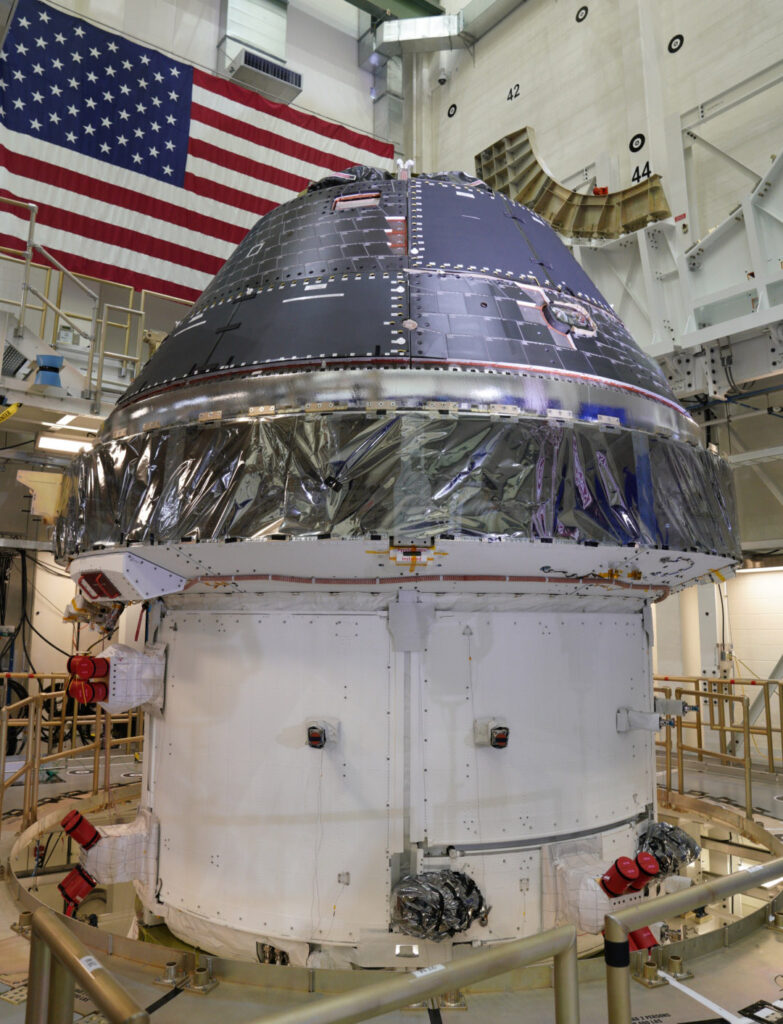
The completed Orion spacecraft crew module at the NASA Kennedy Space Center (Image credit: Lockheed Martin)
With work well underway on both the Artemis I and II rockets, with core stage assembly nearly complete at Michoud, Orion will leave Lockheed for testing at NASA’s Stennis Space Center near Bay St. Louis, in Mississippi.
Sipe concluded that: “In 1981, NASA wanted to move back into deep space so since 1981 we were flying the space shuttle, and physically could not go outside the Earth’s orbit, the Apollo was the last spacecraft that physically could leave the gravity of the Earth and move into deep space, and NASA had a desire for mankind to return. Orion is the only spacecraft development that is a true exploration class spacecraft. It’s not like any other, it has unique capabilities never before seen and even though the capsule is a heritage of the Apollo mission, its actually far superior.”
Join the discussion of this and other 3D printing topics at 3DPrintBoard.com.
Subscribe to Our Email Newsletter
Stay up-to-date on all the latest news from the 3D printing industry and receive information and offers from third party vendors.
Print Services
Upload your 3D Models and get them printed quickly and efficiently.
You May Also Like
OVERLEAF 3D Prints Cryogenic Tank For Aviation Liquid Hydrogen
Spanish technology center Aimen has 3D printed a cryogenic tank meant to store liquid hydrogen for use as aviation fuel. This test tank was made as a part of OVERLEAF,...
Low-cost “Suzy” Polymer Powder 3D Printer is Faster and Cheaper than Past Models
Polish laser powder bed fusion (LPBF) firm Sinterit has released a follow-up to its predecessors, Lisa and Nils, called Suzy, a $19,490 printer equipped with a 30W fiber diode laser....
OPPO Find N5: World’s Thinnest Foldable Smartphone Hinges on 3D Printed Hinges
OPPO has unveiled its latest foldable smartphone, the Find N5, demonstrating a significant step forward in the ongoing push for slimmer, more durable foldable devices. With a folded thickness of...
ADDMAN Adds Continuous Composites Technology for Hypersonics and UAV Applications
ADDMAN Group and Continuous Composites are teaming up to reshape how aerospace and defense sectors create parts for hypersonic vehicles and unmanned aerial vehicles (UAVs). Through this partnership, the two...



